- Clone
- SP8 (See other available formats)
- Regulatory Status
- RUO
- Other Names
- Syntaxin-1A, neuron-specific antigen HPC-1
- Isotype
- Mouse IgG1
- Ave. Rating
- Submit a Review
- Product Citations
- publications
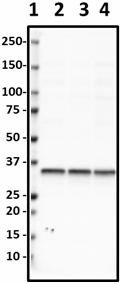
-

Western blot of Biotin anti-Syntaxin antibody (clone SP8). Lane 1: Molecular weight marker; Lane 2: 20 µg of human brain lysate; Lane 3: 20 µg of mouse brain lysate; Lane 4: 20 µg of rat brain lysate. The blot was incubated with 0.1 µg/mL of the primary antibody overnight at 4°C, followed by incubation with HRP Streptavidin. Enhanced chemiluminescence was used as the detection system. -

Immunofluorescence staining of Biotin anti-Syntaxin antibody (clone SP8) on formalin-fixed paraffin-embedded human cerebellum tissue. Following antigen retrieval using Sodium Citrate H.I.E.R, the tissue was incubated with 5 µg/ml of the primary antibody overnight at 4°C, followed by incubation with Alexa Fluor® 647 streptavidin (Cat. No. 405237) for one hour at room temperature. Nuclei were counterstained with DAPI. The image was captured with a 40X objective. Scale bar: 50 µm -

Immunofluorescence staining of Biotin anti-Syntaxin antibody (clone SP8) on formalin-fixed paraffin-embedded mouse brain hippocampus tissue. Following antigen retrieval using Sodium Citrate H.I.E.R, the tissue was incubated with 5 µg/ml of the primary antibody overnight at 4°C, followed by incubation with Alexa Fluor® 647 streptavidin (Cat. No. 405237) for one hour at room temperature. Nuclei were counterstained with DAPI. The image was captured with a 40X objective. Scale bar: 50 µm. -

Immunofluorescence staining of Biotin anti-Syntaxin antibody (clone SP8) on formalin-fixed paraffin-embedded rat brain hippocampus tissue. Following antigen retrieval using Sodium Citrate H.I.E.R, the tissue was incubated with 2.5 µg/ml of the primary antibody overnight at 4°C, followed by incubation with Alexa Fluor® 647 streptavidin (Cat. No. 405237) for one hour at room temperature. Nuclei were counterstained with DAPI. The image was captured with a 10X objective. Scale bar: 100 µm. -

Immunofluorescence staining of Biotin anti-Syntaxin antibody (clone SP8) on formalin-fixed paraffin-embedded rat brain hippocampus tissue. Following antigen retrieval using Sodium Citrate H.I.E.R, the tissue was incubated with 2.5 µg/ml of the primary antibody overnight at 4°C, followed by incubation with Alexa Fluor® 647 streptavidin (Cat. No. 405237) for one hour at room temperature. Nuclei were counterstained with DAPI. The image was captured with a 40X objective. Scale bar: 50 µm. -

Immunofluorescence staining of Biotin anti-Syntaxin antibody (clone SP8) on formalin-fixed paraffin-embedded rat brain cerebellum tissue. Following antigen retrieval using Sodium Citrate H.I.E.R, the tissue was incubated with 2.5 µg/ml of the primary antibody overnight at 4°C, followed by incubation with Alexa Fluor® 647 streptavidin (Cat. No. 405237) for one hour at room temperature. Nuclei were counterstained with DAPI. The image was captured with a 40X objective. Scale bar: 50 µm.
| Cat # | Size | Price | Quantity Check Availability | Save | ||
|---|---|---|---|---|---|---|
| 827005 | 25 µg | 109€ | ||||
| 827006 | 100 µg | 240€ | ||||
Syntaxin, also known as syntaxin-1A and neuron-specific antigen HPC-1, is part of the Q-SNARE protein family that participates in exocytosis. Syntaxins have a SNARE domain, an N-terminal regulatory domain, and a single C-terminal transmembrane domain. Syntaxin drives the spontaneous calcium-independent fusion of synaptic vesicles that contain v-SNARE proteins, and may form part of the fusion pore of exocytosis.
Product DetailsProduct Details
- Verified Reactivity
- Human, Mouse, Rat
- Antibody Type
- Monoclonal
- Host Species
- Mouse
- Immunogen
- This monoclonal antibody was raised against a crude synaptic preparation from a post-mortem human brain.
- Formulation
- Phosphate-buffered solution, pH 7.2, containing 0.09% sodium azide.
- Preparation
- The antibody was purified by affinity chromatography and conjugated with biotin under optimal conditions.
- Concentration
- 0.5 mg/ml
- Storage & Handling
- The antibody solution should be stored undiluted between 2°C and 8°C. Do not freeze.
- Application
-
WB - Quality tested
IHC-P - Verified - Recommended Usage
-
Each lot of this antibody is quality control tested by Western blotting. For Western blotting, the suggested use of this reagent is 0.05 - 0.5 µg per ml. It is recommended that the reagent be titrated for optimal performance for each application. For immunohistochemistry, a concentration range of 2.5 - 10 µg/ml is suggested. It is recommended that the reagent be titrated for optimal performance for each application.
- Application Notes
-
This antibody is effective in immunohistochemistry (IHC-P) and western blotting (WB).
- Application References
-
- Honer WG, et al. 1997. Neuroscience 78(1):99-110.
- Honer WG, et al. 1993. Brain Res. 609(1-2):9-20.
- RRID
-
AB_2801168 (BioLegend Cat. No. 827005)
AB_2801168 (BioLegend Cat. No. 827006)
Antigen Details
- Biology Area
- Cell Biology, Neuroscience, Synaptic Biology
- Molecular Family
- Presynaptic proteins
- Gene ID
- 6804 View all products for this Gene ID
- UniProt
- View information about Syntaxin on UniProt.org
Related Pages & Pathways
Pages
Related FAQs
- How many biotin molecules are per antibody structure?
- We don't routinely measure the number of biotins with our antibody products but the number of biotin molecules range from 3-6 molecules per antibody.
Other Formats
View All Syntaxin Reagents Request Custom Conjugation| Description | Clone | Applications |
|---|---|---|
| Purified anti-Syntaxin | SP8 | IHC-P,WB |
| HRP anti-Syntaxin | SP8 | WB,IHC-P |
| Biotin anti-Syntaxin | SP8 | WB,IHC-P |
| Alexa Fluor® 647 anti-Syntaxin | SP8 | IHC-P |
| Alexa Fluor® 488 anti-Syntaxin | SP8 | IHC-P |
Compare Data Across All Formats
This data display is provided for general comparisons between formats.
Your actual data may vary due to variations in samples, target cells, instruments and their settings, staining conditions, and other factors.
If you need assistance with selecting the best format contact our expert technical support team.
-
Purified anti-Syntaxin
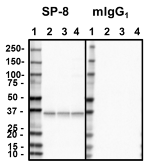
Western blot of purified anti-Syntaxin antibody (clone SP8).... 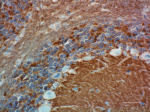
IHC staining of purified anti-Syntaxin antibody (clone SP8) ... 
IHC staining of purified anti-Syntaxin Antibody (clone SP8) ... 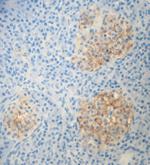
IHC staining of purified anti-Syntaxin antibody (clone SP8) ... -
HRP anti-Syntaxin
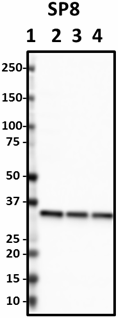
Western blot of HRP anti-Syntaxin antibody (clone SP8). Lane... 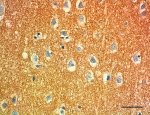
IHC staining of HRP anti-Syntaxin antibody (clone SP8) on fo... 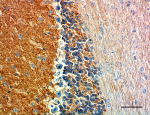
IHC staining of HRP anti-Syntaxin antibody (clone SP8) on fo... 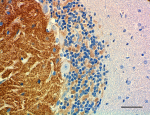
IHC staining of HRP anti-Syntaxin antibody (clone SP8) on fo... -
Biotin anti-Syntaxin
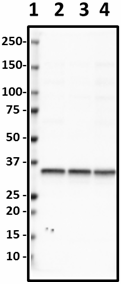
Western blot of Biotin anti-Syntaxin antibody (clone SP8). L... 
Immunofluorescence staining of Biotin anti-Syntaxin antibody... 
Immunofluorescence staining of Biotin anti-Syntaxin antibody... 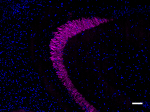
Immunofluorescence staining of Biotin anti-Syntaxin antibody... 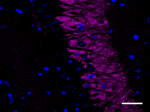
Immunofluorescence staining of Biotin anti-Syntaxin antibody... 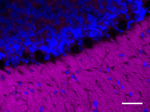
Immunofluorescence staining of Biotin anti-Syntaxin antibody... -
Alexa Fluor® 647 anti-Syntaxin

IHC staining of Alexa Fluor® 647 anti-Syntaxin antibody (clo... 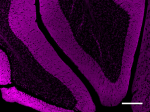
IHC staining of Alexa Fluor® 647 anti-Syntaxin antibody (clo... 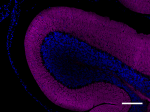
IHC staining of Alexa Fluor® 647 anti-Syntaxin antibody (clo... -
Alexa Fluor® 488 anti-Syntaxin
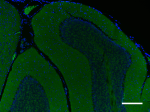
IHC staining of Alexa Fluor® 488 anti-Syntaxin antibody (clo... 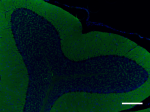
IHC staining of Alexa Fluor® 488 anti-Syntaxin antibody (clo...
 Login / Register
Login / Register 









Follow Us